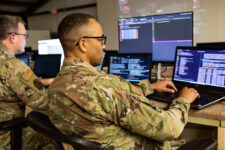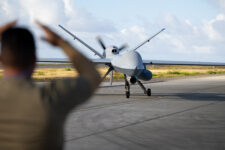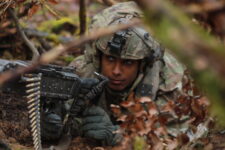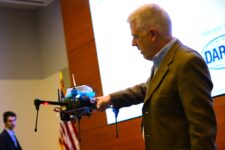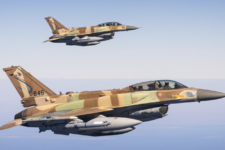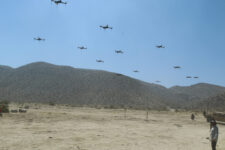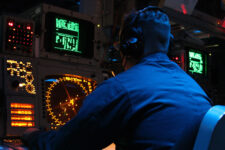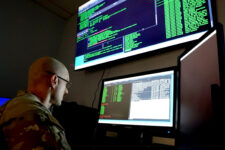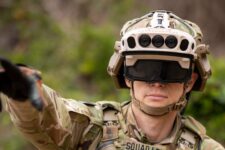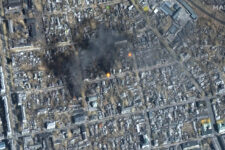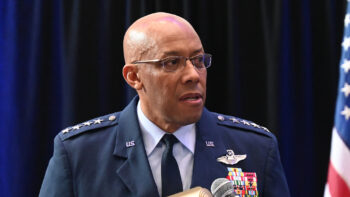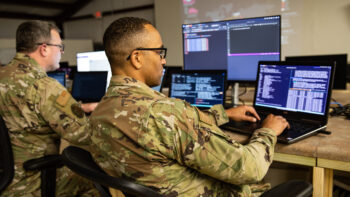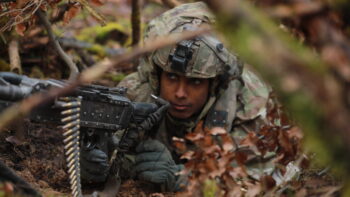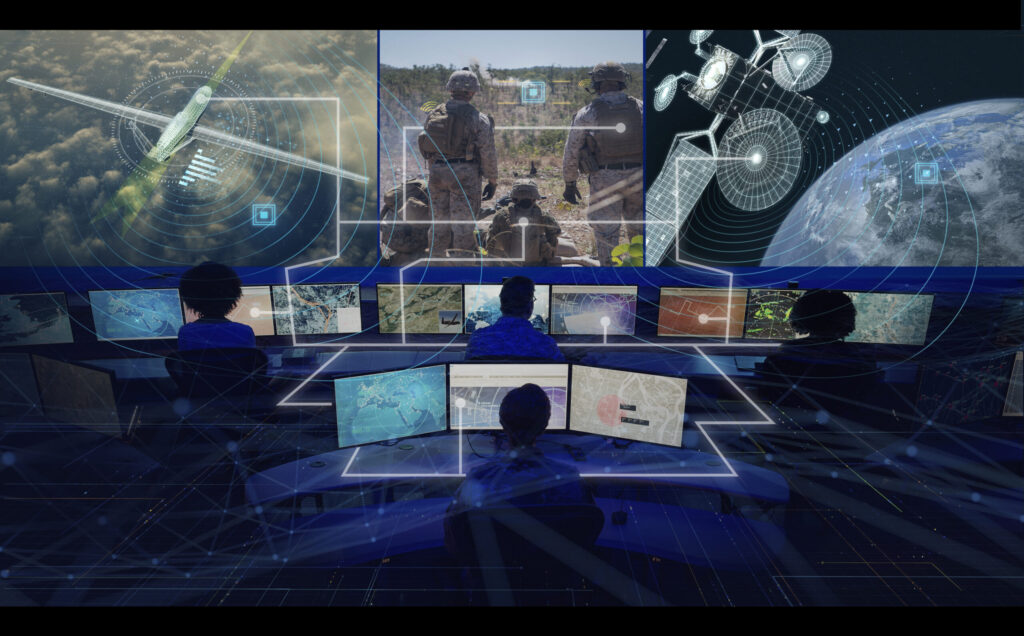
JADC2 graphic courtesy of Northrop Grumman.
WASHINGTON: Nearly a year after it was signed by Defense Secretary Lloyd Austin, the Pentagon today released a public version of its Joint All Domain Command and Control (JADC2) strategy — the effort to develop capabilities for commanders to prosecute high-speed, globe-spanning conflict by linking all US military sensors to all shooters across the land, sea, air, space and cyberspace domains.
And it is a bit of a damp squib.
The eight-page “summary” document [PDF] essentially defines JADC2 and sets out the ambitious goals for the program, but provides little new insight into how the Joint Chiefs of Staff and the military services actually are moving to make it work. For example, while the top officers guiding the effort for the Joint Staff have spoken about work on seven “minimum viable products” needed to provide foundational capability — such as software tools and cloud storage for shareable data — there is no mention of those in the document.
The document stresses that JADC2 is an approach, not a thing or a system in the traditional manner. “JADC2 provides a coherent approach for shaping future Joint Force C2 capabilities and is intended to produce the warfighting capability to sense, make sense, and act at all levels and phases of war, across all domains, and with partners, to deliver information advantage at the speed of relevance,” the document states.
It further notes that “JADC2 transcends any single capability, platform, or system,” instead representing a strategy designed to fundamentally change both the technologies and the doctrine used by the US military to conduct C2 and manage war. In particular, it says, “JADC2 will enable the Joint Force to use increasing volumes of data, employ automation and AI, rely upon a secure and resilient infrastructure, and act inside an adversary’s decision cycle.”
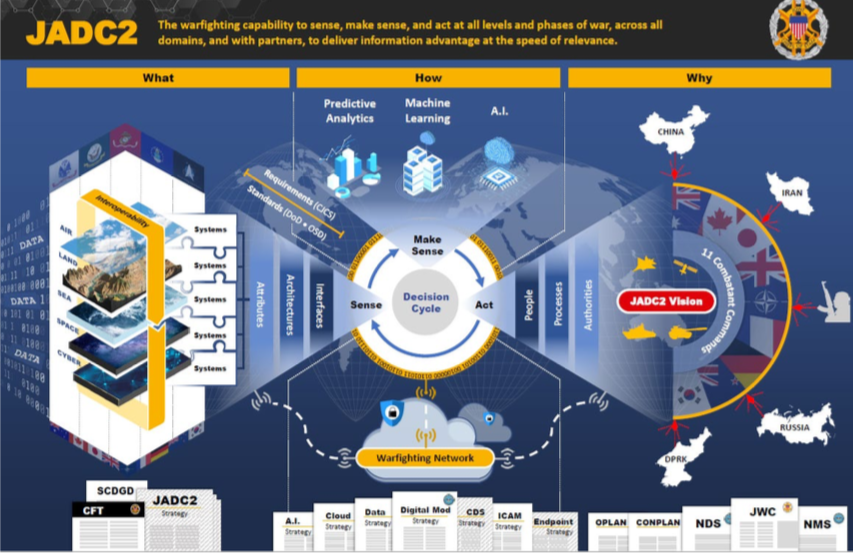
A chart included in the JADC2 document. (DoD)
Implementation of the strategy is being overseen by the JADC2 Cross-Functional Team (CFT), directed by Army Brig. Gen. Rob Parker. The team is “a Deputy Secretary of Defense-chartered body composed of Flag/Senior Executive Service (SES)-level members from across the Combatant Commands, Services, Defense Agencies, Joint Staff, and OSD staff,” the document explains.
To guide the implementation efforts, the strategy lays out “three guiding C2 functions of ‘sense,’ ‘make sense,’ and ‘act,’ and an additional five enduring lines of effort (LOEs) to organize and guide actions to deliver materiel and non-materiel JADC2 capabilities,” the document continues.
Those LOEs are:
Establish the JADC2 Data Enterprise. Echoing comments from senior DoD officials, the document calls data a strategic military asset that must be better managed by the Joint Force to provide “decision advantage” over adversaries — that is, make decisions more rapidly than enemy commanders can so as to be able to steer the conflict in ways that benefit the US side. Data standardization is key to this goal, and this section (the most detailed of them all) lays out those objectives:
- Establishment of minimum metadata tagging criteria;
- Adoption and use of standardized data interfaces;
- Implementation of common data availability and access practices;
- Incorporation of data security best practices;
- Establishment of JADC2 conformant Information Technology (IT) standards; and,
- Continued application of data strategic objectives (Visible, Accessible, Understandable,
Linked, Trustworthy, Interoperable, Secure).
Establish the JADC2 Human Enterprise. This LOE is aimed at developing artificial intelligence and machine learning tools to help speed decision-making at all levels of command. It also focuses on developing new concepts of operations, doctrine and training to take advantage of those tools.
Establish the JADC2 Technical Enterprise. The focus here is on “cyber-hardened, advanced technologies” that will significantly improve a commander’s ability “to organize, understand, plan, decide, direct, and monitor all Joint Force and mission partner actions across all domains, and throughout periods of degraded and contested electromagnetic spectrum use.” This includes “real-time synchronization and integration of kinetic and non-kinetic joint and long-range precision fires” — an issue that is a bit of a hot potato which has already piqued inter-service rivalries. Key to this LOE will be development of a highly secure C2 communications network for transmitting data, a task now in the hands of the Space Development Agency.
Integrate Nuclear C2 and Communications (NC2/NC3) with JADC2. As all things related to NC3 are highly classified, it is not surprising that the document says next to nothing about how this will be achieved. That said, the head of US Strategic Command recently commented on the need to integrate NC3 and JADC2, saying he was “very pleased” with how things are going.
Modernize Mission Partner Information Sharing. Top brass have been saying for years that better integrating allies and partners into US warfighting capabilities is crucial, as future wars almost certainly will be fought via coalitions. “Ideal mission partner system integration is realized when data from each partner’s C2 systems can be accessed, viewed, and acted upon by every other approved partner. However, emerging missions, large coalitions, and evolving technologies present ongoing obstacles to achieving this goal,” the document explains. JADC2 is supposed to help fix that.
